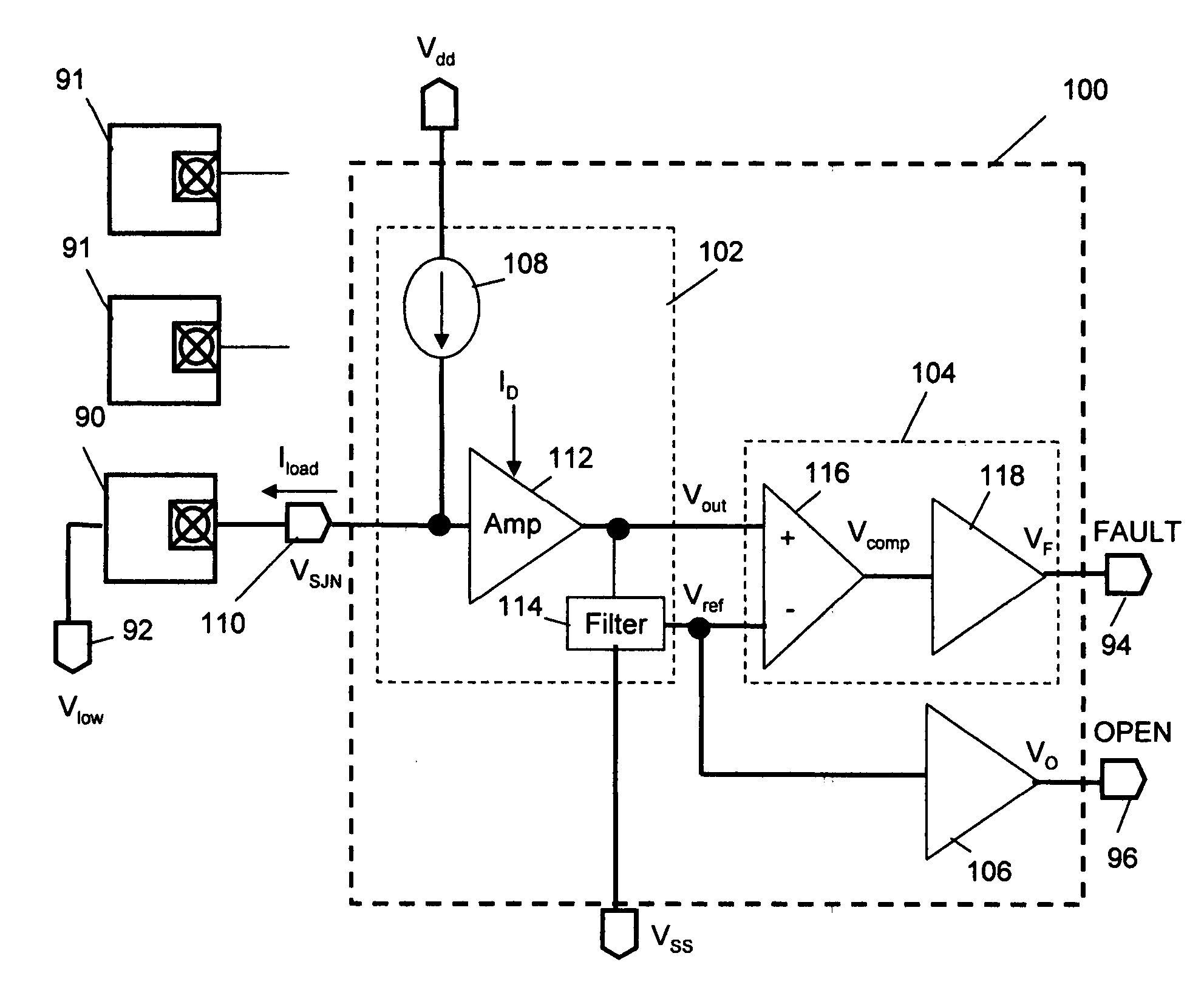Method and circuit for low-power detection of solder-joint network failures in digital electronic packages
a technology of solder-joint network and low-power detection, which is applied in the direction of individual semiconductor device testing, emergency protective arrangements for limiting excess voltage/current, instruments, etc., can solve the problems of reduced reliability, prone to connection failure, and major reliability problems of solder-joint connections
- Summary
- Abstract
- Description
- Claims
- Application Information
AI Technical Summary
Benefits of technology
Problems solved by technology
Method used
Image
Examples
Embodiment Construction
[0033]The present invention provides a low power circuit and method for detecting in-situ failures or precursors to failures in solder-joint networks on actual operational devices and packages in the field. The circuit can detect failures in a solder-joint network defined from the logic inside the die of an FPGA or microcontroller, through the internal and external solder-joint connections to circuit connections on a PWB in actual operational devices and packages in the field. The detected failure or precursor of a selected monitor solder-joint network(s) is an indicator of the integrity of other operational solder-joint networks in the package, on the PWB or between PWBs.
[0034]This is accomplished by first holding one side of a designated monitor solder-joint network at a low voltage including a steady-state component and noise, suitably by pulling the write logic output buffer on the die low. There is a large variation between the steady-state low-voltage (voltage-low) of transist...
PUM
 Login to View More
Login to View More Abstract
Description
Claims
Application Information
 Login to View More
Login to View More - R&D
- Intellectual Property
- Life Sciences
- Materials
- Tech Scout
- Unparalleled Data Quality
- Higher Quality Content
- 60% Fewer Hallucinations
Browse by: Latest US Patents, China's latest patents, Technical Efficacy Thesaurus, Application Domain, Technology Topic, Popular Technical Reports.
© 2025 PatSnap. All rights reserved.Legal|Privacy policy|Modern Slavery Act Transparency Statement|Sitemap|About US| Contact US: help@patsnap.com



